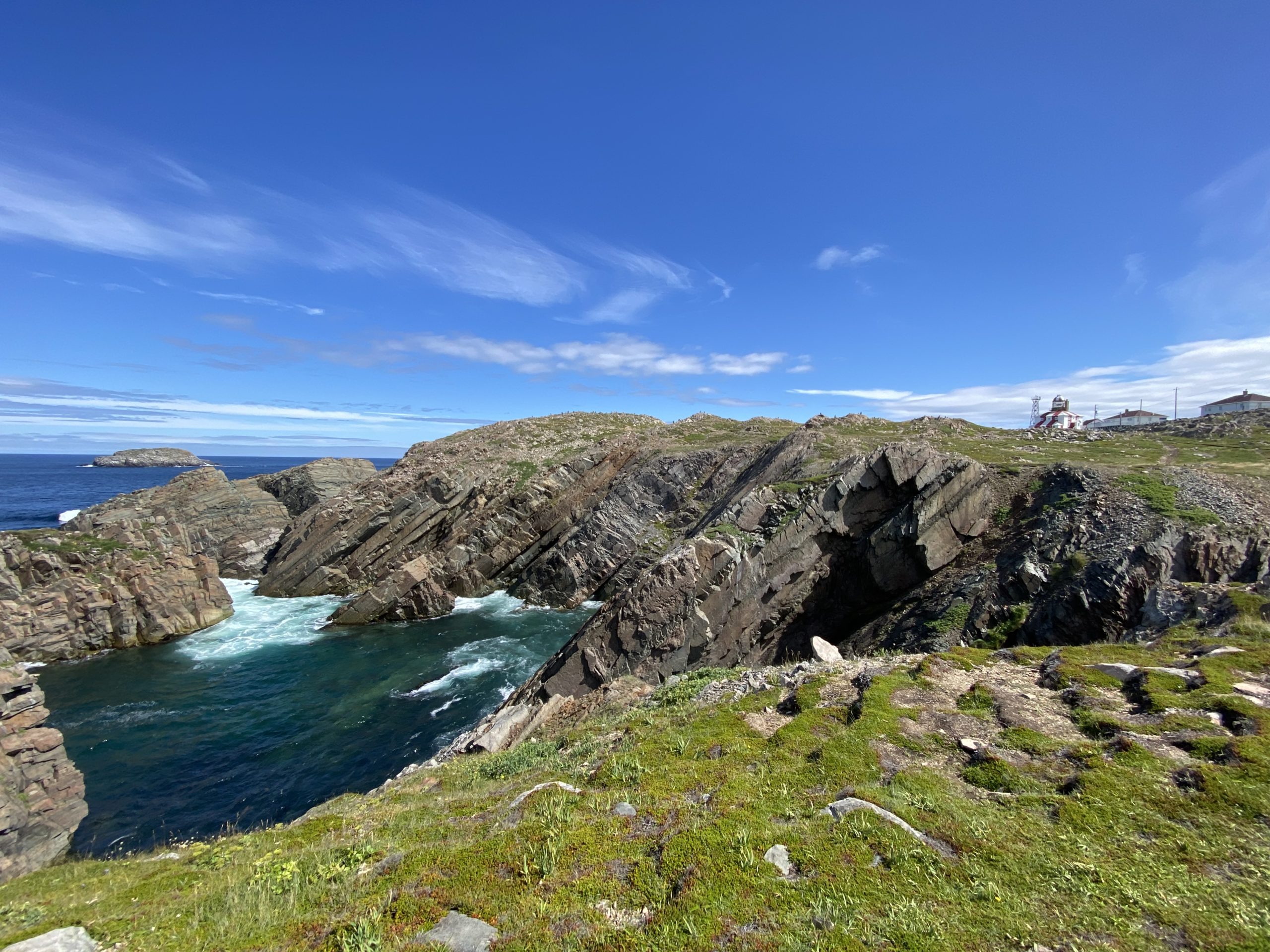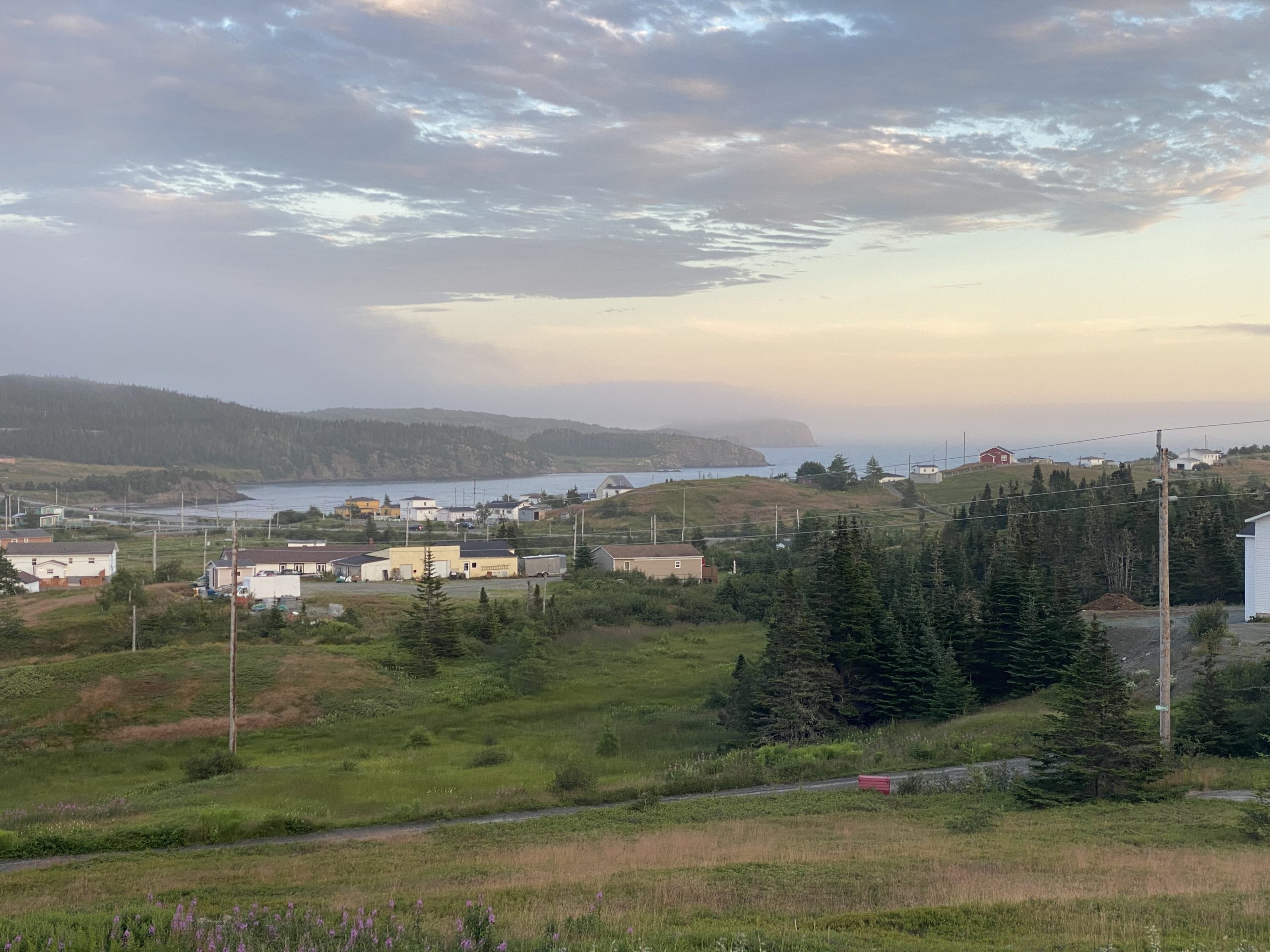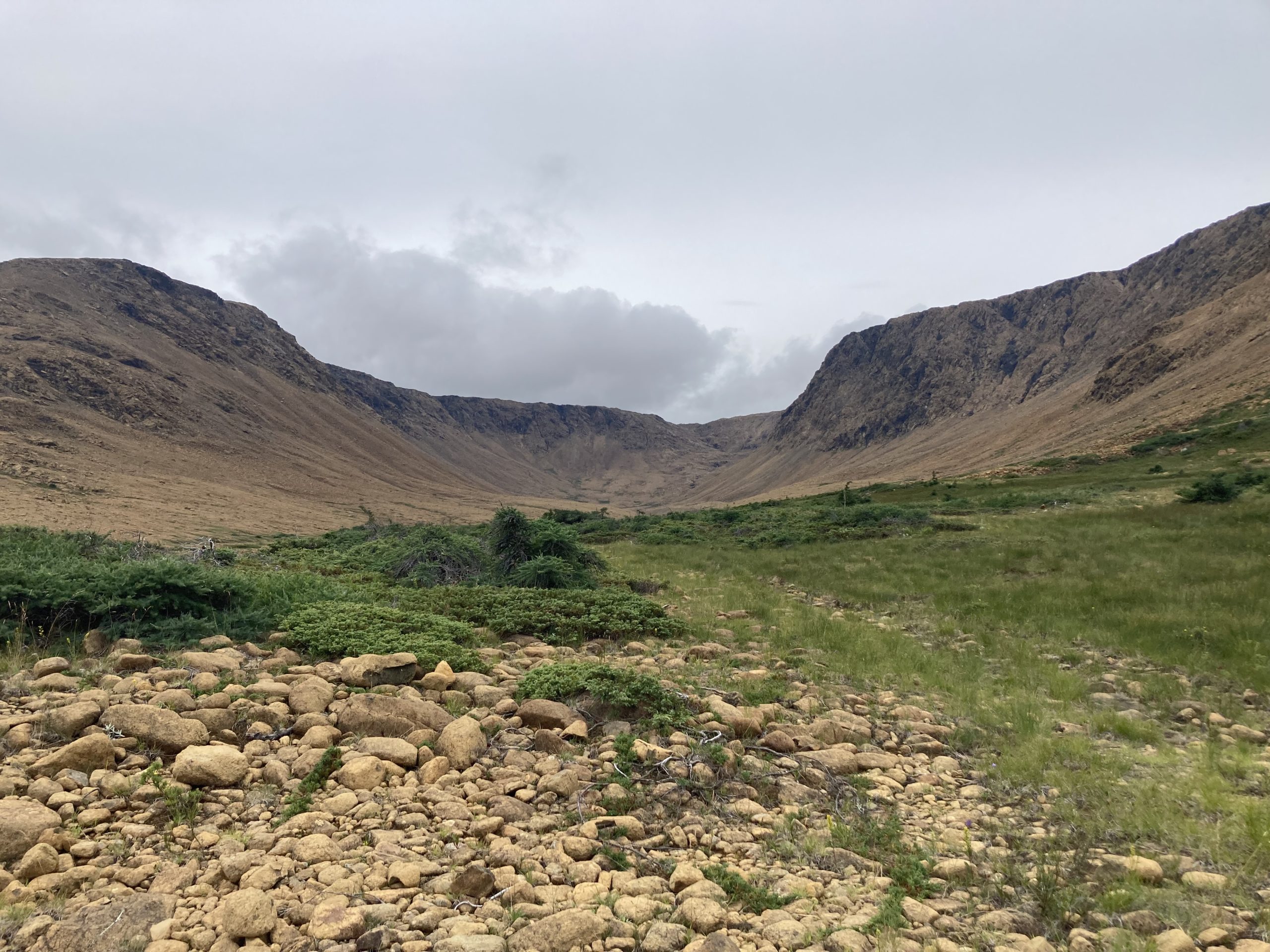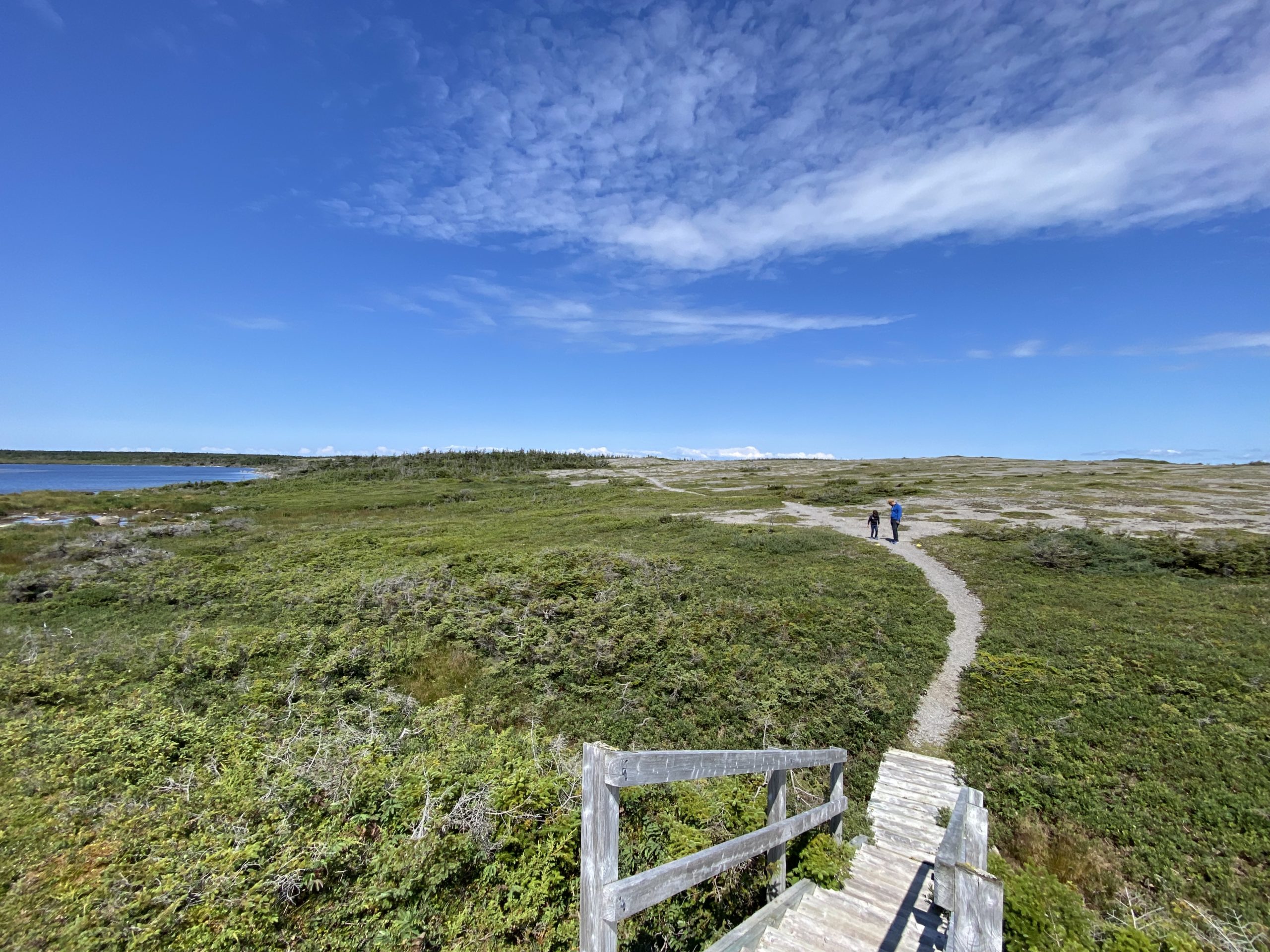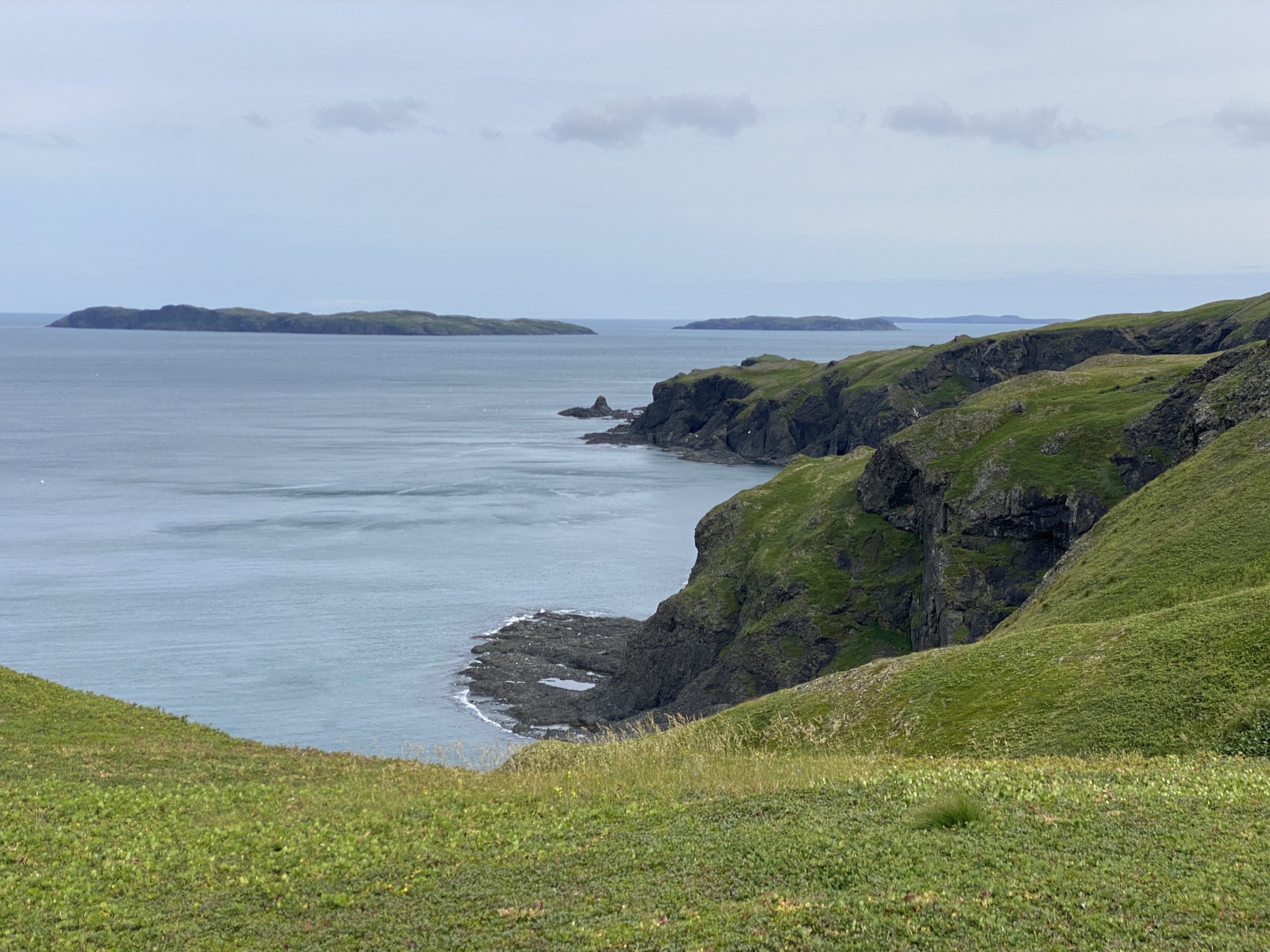We've visited St. John's before with the boys, but since Abe was just 4 months old at the time, his memories of the place are pretty patchy. This time around was a better opportunity for both of them to see "town" — Susan's birthplace and the provincial capital. For us, no trip to St. John's is complete without a picnic at the Ferryland Lighthouse. We were extremely lucky with the weather this time around, basking in the sun on the headland's grass and juniper, before doing a bit of learning down at the archeological site of the Avalon Colony, one
After we left Gros Morne, we made our way east to Trinity Bay. We were staying in Port Rexton with family, and much of our days were filled with homey family pursuits — picking blueberries and turning them into pies, learning how to play the Bodhrán, riding four-wheelers, making pizzas, joining a music night with the neighbours. Still, we also went on a couple of local expeditions, including to Trinity, which is a very pretty little town (if somewhat over-touristed) with lots of historic buildings restored as they were in the nineteenth century, and a walk around the stunning Skerwink Trail.
While we were staying in Port Rexton, we took a day to visit Cape Bonavista. We looped up through Elliston, with its root cellars and colony of bustling puffins, and past the more-scary-in-name-than reality "Dungeon" rock formation, learning the meaning of a geological "gloup" in the process. Then we stopped right at the tip of the Cape at the lighthouse, before heading into the town of Bonavista itself. The supposed landing spot for Giovanni (John) Caboto in 1497 ("O Boun Vista", "oh happy sight"), it's managed to retain a bit of a working cod fishery, with trawlers active in the
View from our window: Port Rexton, Newfoundland, 8:05pm, 11 August 2023
Western Brook Pond gets all the glory of the glamour shots in the Gros Morne tourist brochures, but the Tablelands is probably the more interesting geological feature. This is one of the few places on earth where the Earth's mantle sits atop its crust (the other places are under water in Oman and the middle of the rainforest in Papua New Guinea — "this is the only one with a parking lot," quipped our guide.) The Tablelands is enough of a desolate wasteland that NASA tests out Mars-equipment here because it's sufficiently similar, even down to the reddish hue of
View from our window: Rocky Harbour, Newfoundland, 7:38am, 08 August 2023
Port au Choix is not the most breathtaking historic site you'll ever see. It's notable for three main things: The ancient burial grounds of the Maritime Archaic people, some 4,000 year olds Rare arctic plant species, some of which are found only here. A large herd of caribou, offering the chance to see them up close. As it happens, the artifacts from the burial grounds are all off-display pending ongoing discussions with indigenous stakeholders; the rare arctic species are nondescript and indistinguishable from gravel to our undiscerning eyes; and the caribou were nowhere to be found So, not exactly thrill-a-minute! But since we're in
You can drive all the way up to the far end of the northern peninsula and have nothing but rain, drizzle, and fog. If that is your experience, you might question the merits of driving so many kilometres for so little reward. But when the sun shines and you have nothing but rugged beauty and rolling ocean as far as your eye can see, well then the long trip feels infinitely worth it. We may never come back this way again, given the distances involved, but we will have fabulous memories of our visit. Fisherman's Point in Saint Anthony Pointing out
"How many weather days like this do you get a year?" "Three?" We were issued bright orange survival suits. Normally, you come back soaking wet and the skipper stops the boat regularly in case anyone is feeling seasick. Not today. The sun shone, the winds were calm, the sea had no swell. And the whales! The whales came out to play. At first, the humpbacks were just surfacing to breathe, which is cool to see up-close, but a common enough sight off the coast of Newfoundland. Then, they gave us a few leaps, breaching right in front of us: first one, then
The main reason for heading up to the far-northern tip of Newfoundland is to go and see the settlements in L'Anse aux Meadows — the only confirmed Norse site in North America. In 1960, Norwegian researchers found archaeological evidence of ~1,000-year old buildings that were similar to known Norse sights in Greenland and Iceland. We were fortunate enough to get a tour from a Parks Canada Guide who was a young boy in the nearby fishing village when the site was first discovered. He had played on the "Indian mounds" (as they were then known) as a child, and had



